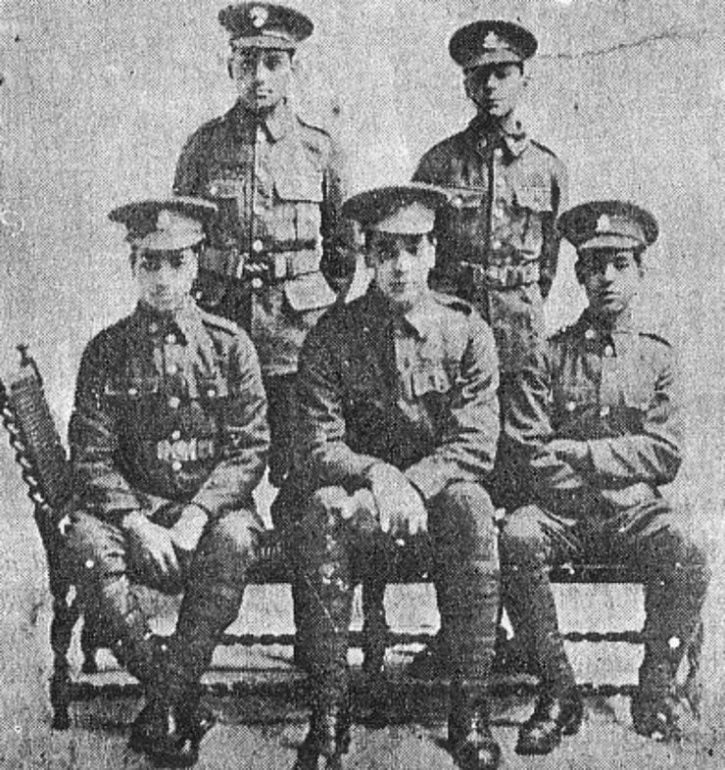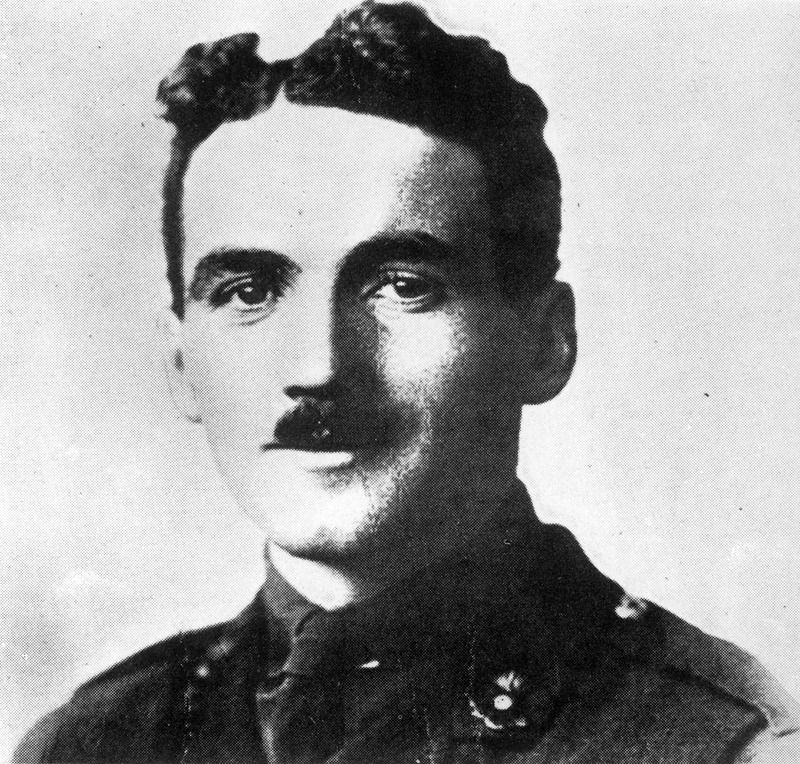World War I had about 1.5 million Indians fighting in every theatre of the battle. Among the handful of Indians who fought in the air was a gifted combat pilot who would go on to become India’s first and only fighter ace, Indra Lal ‘Laddie’ Roy. Yet few Indians know about the story of this incredible air warrior from Bengal. Indra Lal Roy was the sole Indian World War I flying Ace. He is also designated as first Indian fighter aircraft pilot. While serving in the Royal Flying Corps (RFC) and its successor, the Royal Air Force (RAF), he claimed ten aerial victories; five aircraft destroyed (one shared), and five ‘down out of control’ (one shared) in just over 170 hours flying time.

Initial Years and Family
He was the second son of Piera Lal Roy and Lolita Roy. Born on 02 Dec 1898 at Calcutta (now Kolkata), where his father was a barrister and Director of Public Prosecutions. He was nicknamed “Laddie”. Theirs was a highly qualified and distinguished family, originally from the Barisal district in present-day Bangladesh. They were prominent Zamindars of East Bengal. Their family estate is called the Lakhutia Zamindar estate and was founded by Roop Chandra Roy in the late 17th century. His older brother, Paresh Lal Roy (1893–1979), served in the 1st Battalion, Honourable Artillery Company (HAC) was incorporated by royal charter in 1537 by King Henry VIII and is considered the second-oldest military corps in the world. He was an Indian amateur boxer, credited with popularising the sport among Indians. Later became known as the “father of Indian boxing.” His maternal grandfather, Dr. Surya Kumar Goodeve Chakraborty, was one of the first Indian doctors to be trained in Western medicine. His nephew, Subroto Mukerjee (1911–1960), served as a fighter pilot in World War II, and later became the first Indian Chief of Air Staff of the Indian Air Force. Interestinly Indra Lal’s elder brother Paresh was NDTV founder Prannoy Roy’s paternal grandfather.

Roy Joins RFC
In 1901, Roy’s family moved to London. When the First World War broke out, Roy was attending school, in London, England. Determined to do his bit, he signed up for the cadet force at his school, the 400-year-old St Paul’s School for Boys at Hammersmith. The bright teenager also designed a trench mortar and sent the design to the War office along with notes on its advantages. Impressed by his academic record and innovative designs, Roy was awarded a scholarship by Oxford University.

Initially he was rejected by the Royal Flying Corps on the grounds of poor eyesight. But Roy was not someone who would give up so easily. He sold his motorbike to pay for a second opinion from one of Britain’s leading eye specialists. This time, he cleared the eye test. Five months after turning 18, on 4 April 1917, he joined the RFC, and was commissioned as a second lieutenant on 5 July. After training and gunnery practice, he joined No.56 Squadron on 30 October. Roy was part of “A” Flight, commanded by Captain Richard Maybery, who himself became a flying ace with 21 aerial victories, and was awarded bar to Military Cross.

Two months later, Roy was injured after he crash-landed his S.E.5a fighter on 6 December. There are some unconfirmed version that he was actually shot by a German aircraft over France. He was injured, an unconscious Roy was moved to the local hospital where he was taken for dead and laid out in the morgue. On regaining consciousness, he banged loudly on the morgue’s door while shouting out in his school-boy French! After the door was finally opened by the terrified hospital staff, the boy ‘who had come back from the dead’ was promptly sent back to England for further treatment. While recovering from the crash, Roy made numerous sketches of aircraft, many of which survive, and are now displayed at the IAF museum in Delhi.

In May he returned to duty as an equipment officer and within a few weeks, the very determined Roy passed as medically fit to fly. More focused than ever before, Roy trained hard to become a good fighter pilot. He was transferred to Captain George McElory’s flight in No.40 Squadron in June 1918. Interestingly, Captian George Edward Henry McElroy MC and Two Bars, DFC &Bar (14 May 1893 – 31 July 1918) was a leading Irish fighter pilot and air ace of the RFC and RAF during World War I. He was credited with 47 aerial victories.

On his return to active service, Roy achieved ten victories (two shared) in just thirteen days with just over 170 hours total flying experience. His first was a Hannover over Drocourt, Northern France, on 6 July. This was followed by three victories in the space of four hours on 8 July (two Hannover Cs and a Fokker D.VII); two on 13 July (a Hannover C and a Pfalz D.III); two on 15 July (two Fokker D.VIIs); and one on 18 July (a DFW C.V) Roy’s final victory came the following day when he shot down a Hannover C over Cagnicourt. Unfortunately, the talented pilot didn’t survive the war.

Killed In Action and Final Resting Place
Roy was shot down on July 22, 1918, when his plane was attacked by four Fokker DVIIs. Roy fought back, however, was hit by the gunfire from the Fokker DVIIs. His plane burst into flames before crashing into German-controlled territory. He was just 19 years old. As per some sources, Roy was so well known as a fighter pilot that Manfred von Richthofen “Red Baron” the top German WWI flyer with 80 aerial victories, paid him a tribute by dropping a wreath from the skies at the spot where his plane had crashed. This story pops up on social media now and then, but truth is that in fact, the Baron was himself killed in action on 21 April 1918, three months before Lt Roy’s death. He was the first and only Indian flying ace of the First World War. A flying ace is a fighter pilot credited with shooting down five or more enemy aircrafts. Indra Lal Roy was buried at the Estevelles Communal Cemetery, about 100 km north of the grave of another Indian combat pilot of World War I, Lieutenant Srikrishna Welingkar. His grave bears a simple inscription in Bengali that reads “Maha birer samadhi; sambhram dekhao, sparsha koro na” (The grave of courageous warrior; respect it, do not touch it).

List of aerial victories
| S.No | Date/Time | Aircraft/ Serial No. | Opponent | Location |
| 1 | 6 July 1918 @ 0545 | S.E.5a (B180) | Hannover C | Drocourt |
| 2 | 8 July 1918 @ 0645 | S.E.5a (B180) | Hannover C | Drocourt |
| 3 | 8 July 1918 @ 0925 | S.E.5a (B180) | Hannover C | East of Monchy |
| 4 | 8 July 1918 @ 1025 | S.E.5a (B180) | Fokker D.VII | South-east of Douai |
| 5 | 13 July 1918 @ 0645 | S.E.5a (B180) | Hannover C | West of Estaires |
| 6 | 13 July 1918 @ 2005 | S.E.5a (B180) | Pfalz D.III | Vitry — Brebières |
| 7 | 15 July 1918 @ 2005 | S.E.5a (B180) | Fokker D.VII | Hulloch |
| 8 | 15 July 1918 @ 2005 | S.E.5a (B180) | Fokker D.VII | Hulloch |
| 9 | 18 July 1918 @ 2040 | S.E.5a (B180) | DFW C.V | South-east of Arras |
| 10 | 19 July 1918 @ 1025 | S.E.5a (B180) | Hannover C | Cagnicourt |
Honours and Awards
Roy was posthumously awarded the Distinguished Flying Cross (DFC) in September 1918 for his actions during the period of 6–19 July 1918. He was the first Indian to receive the DFC. His citation read:
Lieutenant Indra Lal Roy.
“A very gallant and determined officer, who in thirteen days accounted for nine enemy machines. In these several engagements he has displayed remarkable skill and daring, on more than one occasion accounting for two machines in one patrol. (20 September 1918).

Stamp Release
In December 1998, to mark the 100th anniversary of his birth, the Indian postal service issued a commemorative stamp in his honour. Another Stamp was released in 2019.


List of World War I flying aces from British India
- Captain Lawrence Percival Coombes (15 aerial victories flying Sopwith Camel for the Royal Naval Air Service and the Royal Air Force).
- Captain Maurice Douglas Guest Scott (12 aerial victories flying as both observer and pilot).
- Captain (later Squadron Leader) Edward Dawson Atkinson (10 aerial victories in two combat tours, one while flying a Nieuport, and another flying the S.E.5a.
- Lieutenant Indra Lal Roy (10 aerial victories while piloting a S.E.5a).
- Captain (later group Captain) Arthur Peck (8 aerial victories).
- Captain Douglas Carbery (6 confirmed aerial victories while serving as an aerial observer in various squadrons).
- Lieutenant Thomas Cecil Silwood Tuffield (6 aerial victories confirmed while flying as an observer).
- Captain George M.Cox (5 aerial victories flying Sopwith Camel).
Lead Image Source: Twitter @Imdineshpurohit


Please keep me updated
LikeLike
You did a wonderful job here showing what an amazing person he was.
LikeLiked by 1 person
Thanks. Regards
LikeLiked by 1 person
Manfred von Richtofen died on April 21st 1918, so please explain how he could have dropped a wreath in July 1918?
LikeLike
Please read the text correctly. It says exactly the same thing.
LikeLike